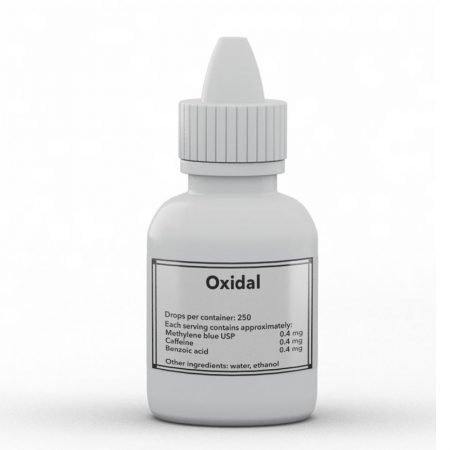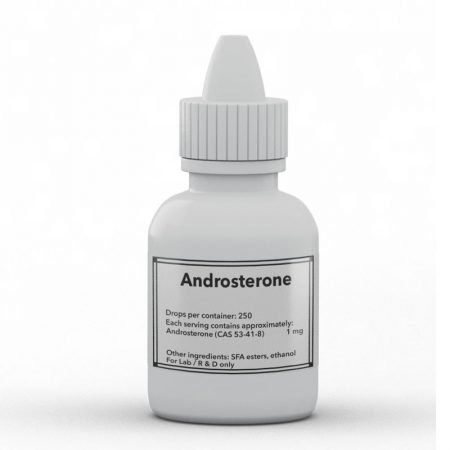Миналата година публикувах няколко теми, които показват, че някои случаи на хронична нервна болка могат да бъдат причинени от страничен ефект на опиоидите – активиране на TLR4. Това проучване обаче разглеждаше само причините, поради които някои пациенти, използващи опиоиди за силна болка, продължават да развиват хронична болка с фантомен произход. В този смисъл проучването не разглежда въпроса дали хроничното активиране на TLR4 може да причини хронична нервна болка самостоятелно, без употреба на опиоиди. Проучването по-долу показва точно това. Хронично повишените нива на лизозимите, които често се наблюдават при хронична нискостепенна ендотоксемия, действат чрез рецептора TLR4, за да предизвикат прословутата фантомна болка, за която съобщават толкова много ветерани от войната, алкохолици, преживели травми, пациенти с посттравматично стресово разстройство/депресия и изобщо хора, подложени на хроничен стрес. Досега медицината третираше тази болка като психологическа по произход и тези бедни пациенти бяха упоявани със SSRI или антипсихотични лекарства. Надяваме се, че в резултат на това проучване вместо това ще се обмислят по-безопасни подходи като спиране на опиоидите, антибиотици като миноциклин и други TLR4 антагонисти като налтрексон, трициклични антидепресанти, витамин D/A, емодин, прегненолон и др.
Не на последно място, проучването поражда някои сериозни опасения относно безопасността на търговските храни и фармацевтичните лекарства, тъй като лизозимът често се използва като съставка в тези продукти. Peat публикува цял информационен бюлетин по темата, но акцентът в него бяха наночастиците и съставките като силициев диоксид, титанов диоксид, хранителни оцветители и т.н., а не ензимите. Така че сега очевидно трябва да добавим към списъка с опасни химикали и ензимите, използвани в млечните продукти и маринованите храни. Макар че приемът на лизозим(и) вероятно ще доведе до разграждане на ензима, който го нарушава, от стомашната киселина, при хипотиреоидните (или болни по други причини) хора този процес е значително намален поради ниските нива на стомашна киселина. По този начин лизозимът може „в най-добрия случай“ да бъде сериозен алерген, а в най-лошия – храните/лекарствата, които купуваме от магазините, могат да ни причинят еквивалент на нискост.епенна ендотоксична реакция с всички рискове, които такава реакция крие.
https://stm.sciencemag.org/content/11/504/eaav4176
https://researchmatters.in/news/iisc-researchers-discern-how-protein-causes-chronic-nerve-pain
“…Chronic pain makes lives miserable, and trillions of dollars are spent globally for its treatment. Persistent nerve pain, due to damage or injury to the nerves, is one such. A quarter of diabetic patients and about 35% of people with HIV infection suffer from this shooting and burning pain. Other causes of nerve pain include cancer, chemotherapy, multiple sclerosis, accidents, surgeries, spinal cord injury, and nutrient deficiency. Although it affects about 7-10% of the world’s population, the available treatment options are not very useful. Besides, since the mechanisms behind chronic nerve pain are not completely clear, it is difficult to design new drugs. In a recent studiu, Prof Avadhesha Surolia and Dr Saurabh Yadav from the Indian Institute of Science, Bengaluru, have described what could be causing such pain. The study, published in the journal Science Translational Medicine, also suggests some potential treatment options. The study was funded by the Council of Scientific and Industrial Research (CSIR) and the Science and Engineering Research Board. The researchers identified lysozyme, a protein found in secretions like tears, saliva and human milk as a cause for persistent nerve pain. Lysozyme is an integral component of our immune system and protects us from bacterial infection by breaking down their cell wall. It is also a commercially important enzyme used in the food and pharmaceutical sectors. Studies on rat nerve cells in the laboratory revealed that the levels of lysozyme increase in these cells after a nerve injury. The injection of lysozyme also caused nerve pain by increasing the excitability of nerve cells. These observations confirmed the role of lysozyme in causing this chronic pain. In healthy nerve cells, the levels of lysozyme are low, and it increases following a nerve injury. A receptor called toll-like receptor-4 (TLR4), present on the surface of the nerve cells, gets activated during such damages. Although TLR4’s role in causing nerve pain was known, the molecular pathway for its activation was not clear.”
“…Annexin A2 is another protein in the body that plays a role in inducing pain. Lysozyme interacts with annexin A2 at the surface of nerve cells and activates TLR4 receptors. The researchers found that lysozyme failed to invoke pain when annexin A2 was absent. The researchers hope that their findings could hold a clue for treating chronic nerve pain. One approach could be using compounds that inhibit lysozyme in the cells, without side effects. When the researchers injected chitobiose, a lysozyme inhibitor, they found that it relieved pain in rats with a nerve injury. Blocking lysozyme is also a safer option than targeting other molecules with a more critical role in the nerve cells. High levels of lysozyme are also found in some other nerve-related disorders like Alzheimer’s, Parkinson’s, and multiple sclerosis. The researchers hope that the findings of this study would form a base to explore the role of lysozyme in such nerve-related diseases.”
Sursă:
- De câte portocale proaspete ai nevoie pentru a-ți curăța ficatul de grăsimi?Dacă aveți un ficat gras, încorporarea portocalelor proaspete în dieta dvs. poate ajuta la restabilirea sănătății ficatului. Acest lucru reiese dintr-un mic studiu italian. Biochimiștii italieni afiliați la Institutul Național de Gastroenterologie, IRCCS Saverio de Bellis, au recrutat 62 de persoane cu disfuncții metabolice asociate cu boala hepatică steatohepatoză… Citește mai mult: Колко пресни портокала са ви необходими, за да изчистите черния си дроб от мазнини?
- Stresul cronic scade dopamina și provoacă boli mintaleDovezile privind rolul stresului cronic în aproape toate condițiile de sănătate pentru care medicii au o denumire continuă să se acumuleze. Din păcate, chiar și în acest ultim studiu, oamenii de știință continuă să insiste că există o diferență misterioasă și nemăsurabilă între stresul cronic care „crește riscul“ și cel care „cauzează“ patologia. Cu toate acestea, aceiași oameni de știință nu au nicio problemă în a afirma… Citește mai mult: Хроничният стрес понижава допамина и причинява психични заболявания
- Estrogenul și cortizolul, nu androgenii, suprimă imunitateaÎn biologia reproducerii, există o teorie foarte faimoasă care este încă considerată dominantă în acest domeniu. Și anume, că bărbații trebuie să accepte echilibrul dintre nivelurile de androgeni și imunitate. Aceasta este cunoscută sub numele de ipoteza deteriorării competenței imunitare (ICHH). Nivelurile mai ridicate de androgeni, conform teoriei, permit bărbatului să n(fizic)… Citește mai mult: Естрогенът и кортизолът, а не андрогените, потискат имунитета
- Inhibarea aromatazei (pentru a reduce estrogenul) poate duce la tratamentul cancerului de stomac.Un alt studiu care dovedește legătura de cauzalitate dintre estrogen și cancer, considerat a fi independent de hormoni. Cancerul de stomac este una dintre principalele cauze de deces prin cancer la nivel mondial și în special în țările asiatice. Este considerat foarte dificil de tratat și majoritatea pacienților sunt diagnosticați în stadii în care intervenția chirurgicală nu este adecvată.… Citește mai mult: Инхибирането на ароматазата (за намаляване на естрогена) може да доведе до лечение на рак на стомаха.
- Imunitatea suprimată, nu virusurile (HPV), poate fi cauza cancerului de pieleRecent am postat mai multe fire legate de imunosupresie și cancer. Iată două dintre ele care oferă o bună imagine de ansamblu și fac legătura între efectele imunosupresoare ale PBMC, estrogen și cortizol și efectele protectoare ale vitaminelor A, E, D, progesteron etc. https://xenobg.com/pnmk-sa-imunosupresivni-a-gladuvaneto-i-ogranichavaneto-na-proteinite-veroyatno-nanasyat-oshte-po-golyama-vreda/ https://xenobg.com/vitamin-d-mozhe-da-spre-rastezha-na-melanoma/ În ciuda dovezilor din ce în ce mai numeroase conform cărora sistemul imunitar suprimat este cel care permite cancerului să se formeze și… Citește mai mult: Потиснатият имунитет, а не вирусите (HPV), може да е причина за рака на кожата
- Vitamina K poate vindeca leucemiaUn alt studiu excelent care demonstrează atât potențialul terapeutic al vitaminelor, cât și natura metabolică/redoxă a cancerului. După cum am menționat în unele dintre podcast-urile mele, vitamina K2 (MK-4) se află în prezent în studii clinice pentru tratamentul/prevenirea unui număr de tipuri diferite de cancer, în special cancerul hepatic și așa-numitele afecțiuni mielodisplastice, care cuprind toate tipurile de cancer… Citește mai mult: Витамин К може да лекува левкемия
- Vitamina D poate opri creșterea melanomuluiStudiu excelent care confirmă recenta mea postare referitoare la faptul că evitarea luminii solare este la fel de dăunătoare pentru sănătate ca fumatul unui pachet de țigări pe zi. La urma urmei, fără lumina soarelui nu va exista prea multă sinteză a vitaminei D, iar aportul suplimentar nu este eficient pentru mulți oameni din cauza unei varietăți de factori, inclusiv excesul… Citește mai mult: Витамин D може да спре растежа на меланома
- Sinteza crescută a acizilor grași (FAS) este pur și simplu un semn de deficit de oxigen / metabolism scăzutDoar o postare rapidă despre un studiu care oferă o perspectivă asupra modului în care oxidarea crescută a acizilor grași poate duce „paradoxal“ și la creșterea sintezei acizilor grași, conducând astfel la ciclul vicios cel mai frecvent observat în diabet și cancer. Una dintre postările mele recente a discutat despre un studiu mult mai recent,… Citește mai mult: Повишеният синтез на мастни киселини (FAS) е просто признак за недостиг на кислород / нисък метаболизъм
- AINS sunt imunosupresoare, iar postul și restricția proteică (probabil) fac și mai mult răuDupă cum am menționat în unul dintre primele podcast-uri cu Danny Rodi, rolul PBMC-urilor ca imunosupresoare este de fapt bine cunoscut în industria transplantului de organe. La un moment dat, în anii 1980, a existat chiar un produs comercial pe bază de PBMC-uri vândut spitalelor ca parte a așa-numitului „tratament parenteral total… Citește mai mult: ПНМК са имуносупресивни, а гладуването и ограничаването на протеините (вероятно) нанасят още по-голяма вреда
- Oamenii au o capacitate asemănătoare cu a salamandrelor de a repara cartilajeleTitlul vorbește de la sine, dar autorii studiului trag concluzia nefericită și nefericită că, deși putem repara cartilajul, nu ne putem repara membrele. Ei bine, numeroasele studii pe animale pe care le-am publicat în ultimul articol nu sunt de acord cu acest lucru și indică atât metabolismul ridicat, cât și progesteronul ca fiind puternice regenerative… Citește mai mult: Хората имат подобна на саламандър способност да възстановяват хрущяли










